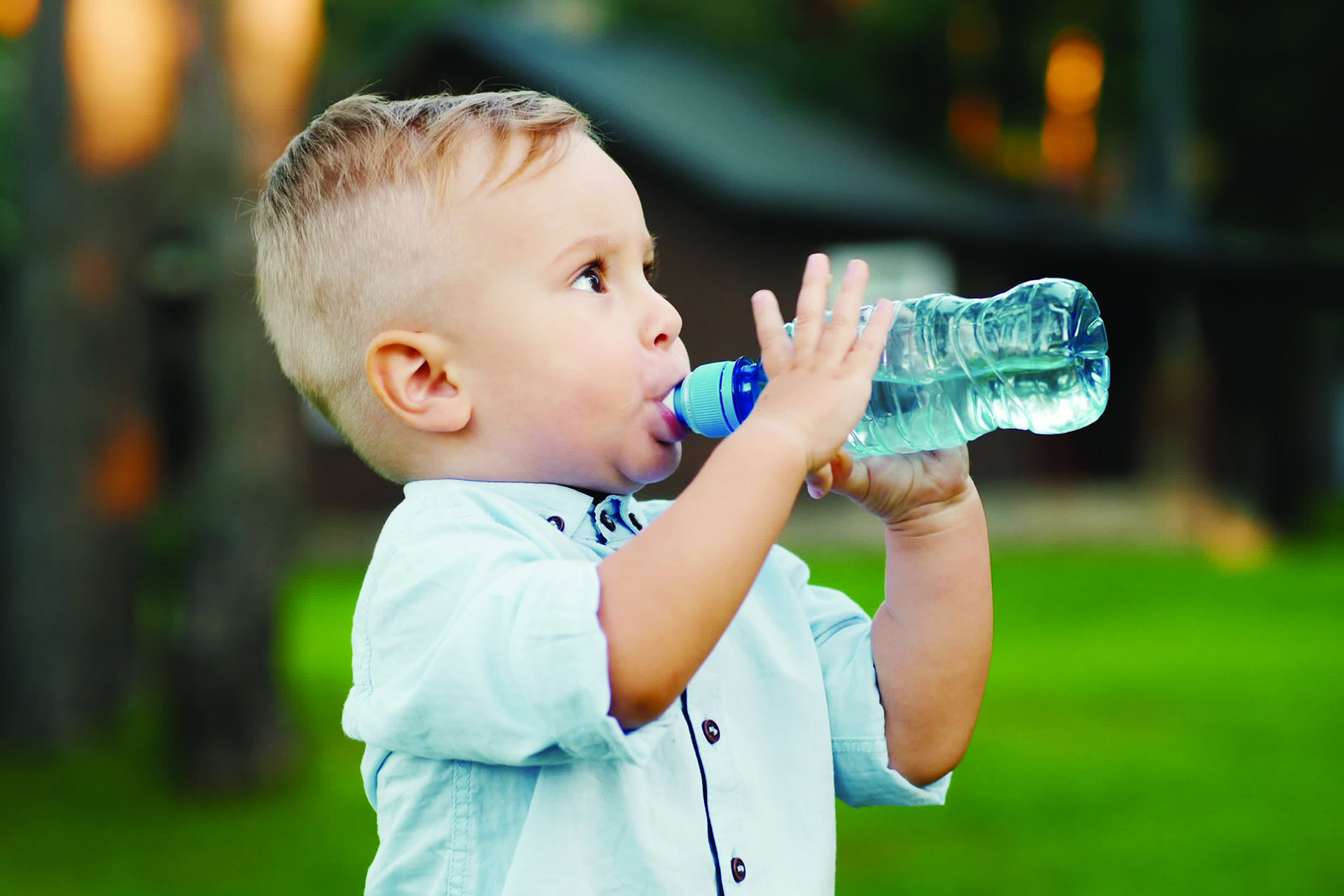
Bebidas saludables
- Home
- Live Well Blog
- Bebidas saludables
Bebidas saludables
Por: CHRISTINA MCGEOUGH, maestría en salud pública, dietista registrada, especialista certificada en educación y atención de la diabetes, consejera certificada en lactancia
El período desde el nacimiento hasta los cinco años es una etapa de rápido crecimiento físico y desarrollo para los niños. Durante estos años, los niños aprenden muchas habilidades nuevas, como alimentarse solos, comunicarse con los demás y expresar sus sentimientos. Son como esponjas que absorben nueva información rápidamente y sienten curiosidad por su entorno y lo que les rodea, incluso lo que comen y beben. Los alimentos y las bebidas que le ofreces a los niños en sus primeros años de vida pueden moldear las preferencias alimentarias y los comportamientos hasta la edad adulta. Consumir demasiadas bebidas endulzadas con azúcar puede generar un aumento de peso excesivo en la infancia. Los estómagos de los niños son pequeños, por lo que beber muchas bebidas puede disminuir su apetito y la cantidad de alimentos que ingieren durante las comidas.
Aquí tienes algunas opciones de bebidas, las cantidades sugeridas por grupo de edad y las formas de ofrecerles bebidas a medida que crecen. Veamos las recomendaciones de bebidas de la Academia Estadounidense de Pediatría (AAP, American Academy of Pediatrics) y comencemos con las opciones obvias: agua y leche.
Agua
- Comienza a introducir el agua después de los 6 meses de edad.
Recomendaciones por edad
De 6 a 12 meses
De 12 a 24 meses
De 2 a 5 años
½ a 1 taza por día
1 a 4 tazas por día
1 a 5 tazas por día
Agua
- Comienza a introducir el agua después de los 6 meses de edad.
Recomendaciones por edad
De 6 a 12 meses
½ a 1 taza por día
De 12 a 24 meses
1 a 4 tazas por día
De 2 a 5 años
1 a 5 tazas por día
Leche de vaca
- A los 12 meses, muchos bebés son destetados y/o dejan de tomar fórmula y también comienzan a incorporar alimentos sólidos en sus dietas.
- Después de los 12 meses, se recomienda la leche de vaca entera porque contiene vitaminas y minerales necesarios para el crecimiento y desarrollo de los niños, como proteínas, calcio, vitaminas A y D, y zinc.
- Después de los 2 años, es mejor cambiar a leche baja en grasa o descremada.
Recomendaciones por edad
De 12 a 24 meses
De 2 a 5 años
2 tazas de
leche entera por día
2 a 3 tazas por día de
leche con 1 % de grasa o leche descremada por día
Leche de vaca
- A los 12 meses, muchos bebés son destetados y/o dejan de tomar fórmula y también comienzan a incorporar alimentos sólidos en sus dietas.
- Después de los 12 meses, se recomienda la leche de vaca entera porque contiene vitaminas y minerales necesarios para el crecimiento y desarrollo de los niños, como proteínas, calcio, vitaminas A y D, y zinc.
- Después de los 2 años, es mejor cambiar a leche baja en grasa o descremada.
Recomendaciones por edad
De 12 a 24 meses
2 tazas de
leche entera por día
De 2 a 5 años
2 a 3 tazas por día de
leche con 1 % de grasa o leche descremada por día
Leche a base de plantas
- Algunos niños tienen alergias a los productos lácteos o intolerancias a la leche de vaca que les impiden beberla. Algunas familias prefieren las leches a base de plantas por razones culturales y/o personales. Es importante señalar que no todas las leches a base de plantas son iguales, y muchas no proporcionan suficiente calcio, vitamina D o proteínas. La leche de soja es la única leche a base de plantas que se recomienda como sustituto de la leche de vaca. Habla con el equipo de atención médica de tu hijo sobre sus necesidades nutricionales si no puede beber leche de vaca ni leche de soja.
Jugo
- Evita ofrecerle jugo a tu hijo antes de que cumpla 12 meses.
- Cuando le ofrezcas jugo, hazlo en una taza y no en un biberón.
- Puedes mezclar jugo con agua para limitar la cantidad de azúcar y las calorías.
- La APP recomienda limitar el jugo a 4 onzas (120 mililitros) por día para niños menores de 3 años y no más de 4 a 6 onzas (120 a 180 mililitros) para niños de 4 a 5 años.
Bebidas a evitar
- Las bebidas endulzadas con azúcar como los refrescos, los tés dulces, las bebidas deportivas y las limonadas pueden generar caries dentales y provocar un aumento de peso excesivo.
- Las bebidas con cafeína pueden causar problemas de sueño, dolores de cabeza y nerviosismo, por lo que deben evitarse.
- Los niños no necesitan bebidas además de agua y leche, pero a menudo se prefieren por su dulzura. Si tu hijo consume bebidas saborizadas y endulzadas, incluso sin calorías, esto puede provocar que no le guste ni beba agua sola.